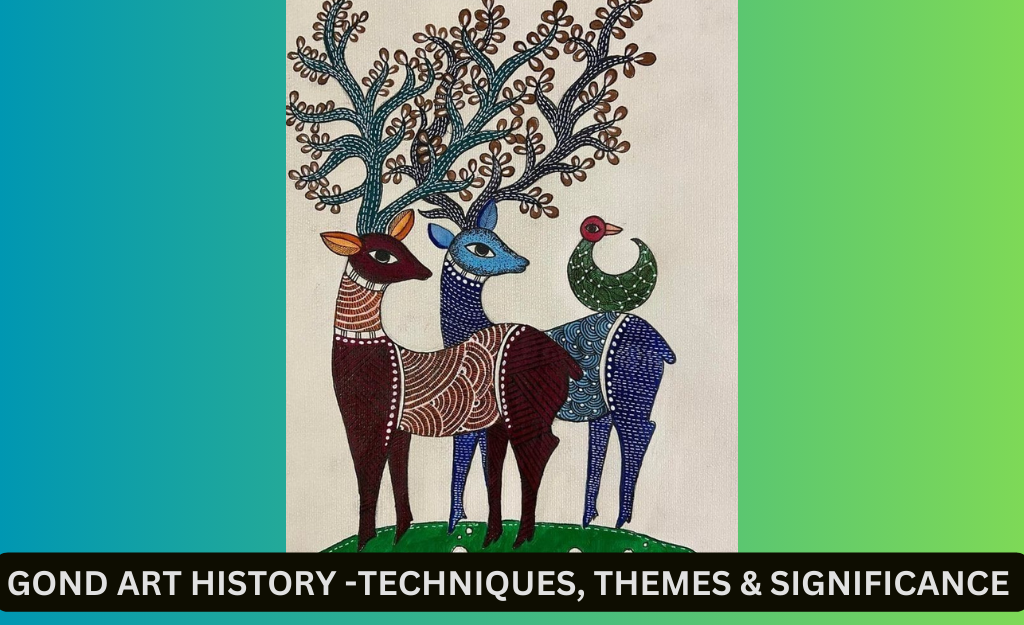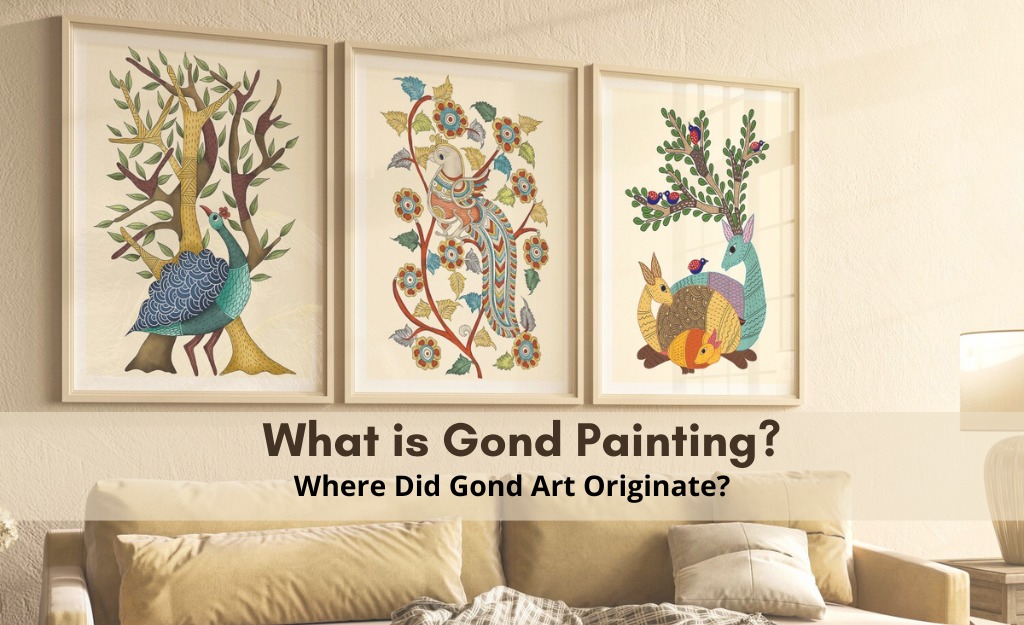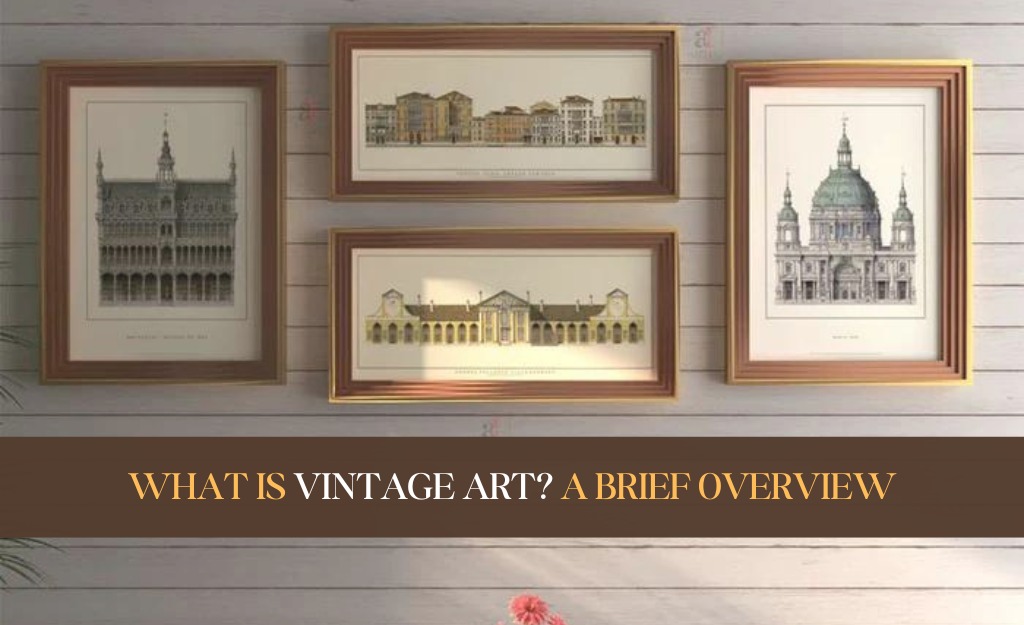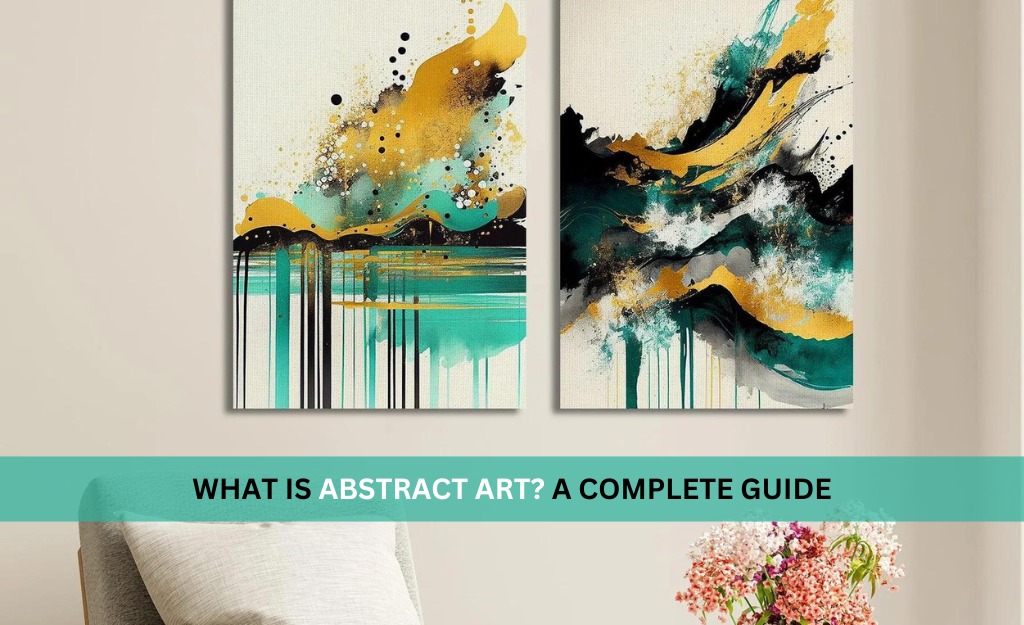Gond painting is an exquisite form of tribal art that hails from the Gond community, one of the largest indigenous groups in India, primarily found in the central regions such as Madhya Pradesh, Chhattisgarh, and parts of Maharashtra, Andhra Pradesh, and Odisha. This art form is essentially known for its intricate patterns and vibrant colors and not only serves as a means of aesthetic expression but also as a medium to preserve and narrate the rich cultural heritage and mythology of the Gond people. This article delves into the history, techniques, themes, and contemporary significance of Gond painting, offering a comprehensive understanding of its evolution and impact.
Historical Context
The roots of Gond wall art painting can be traced back to the prehistoric cave paintings of Central India, which depict scenes of daily life, animals, and nature. The Gonds have a long tradition of decorating their homes and walls with artistic drawings, particularly during festivals and significant life events. Historically, these paintings were created using natural colors derived from soil, charcoal, plant sap, and cow dung, reflecting a profound connection with nature and the environment.
The transformation of Gond art painting into a recognized form of contemporary art began in the 1980s, thanks to the efforts of Jagdish Swaminathan, a prominent artist who discovered the artistic potential of the tribal communities while working in the Bharat Bhavan in Bhopal. Swaminathan encouraged Gond artists to experiment with different mediums and styles, leading to a renaissance of Gond art on paper and canvas. This transition allowed Gond paintings to reach a wider audience and gain recognition in the global art scene.
Techniques and Styles
Gond paintings online in India are characterized by their use of intricate patterns, vivid colors, and detailed narratives. The process typically involves several steps:
- Surface Preparation: Traditional Gond paintings were created on walls and floors, but contemporary artists use paper, canvas, and cloth. The surface is prepared with a base coat, usually a neutral color, to ensure the vibrancy of the subsequent layers.
- Drawing Outlines: The artist begins by sketching the main outline of the design, often depicting animals, plants, deities, and everyday life scenes. This outline serves as the framework for the detailed patterns that follow.
- Filling Patterns: One of the hallmarks of Gond art painting online is the intricate patterns that fill the outlines. These patterns can include dots, dashes, lines, and curves, meticulously arranged to create a sense of movement and texture. Each artist has a unique style, but common motifs include fish scales, tree bark, and bird feathers.
- Coloring: Traditionally, natural colors were used, but modern Gond artists often use acrylics and watercolors. Bright, contrasting colors are applied within the outlined patterns, enhancing the visual appeal and depth of the artwork.
- Final Touches: Details are added to bring the painting to life, emphasizing features and adding intricate designs that highlight the narrative aspect of the piece.
Themes and Motifs
Gond paintings are rich in themes that reflect the cultural and spiritual life of the Gond community. Common motifs include:
- Nature and Animals: The Gonds have a profound connection with nature, which is evident in their art. Trees, birds, fish, and animals like tigers and elephants are frequent subjects, often depicted with human characteristics and intertwined with foliage and celestial elements.
- Mythology and Folklore: Handmade Gond paintings online often narrate stories from Gond mythology and folklore, featuring gods, goddesses, and mythical creatures. These narratives serve not only as entertainment but also as a means of preserving and passing down cultural wisdom and beliefs.
- Daily Life: Scenes of daily life, including farming, hunting, dancing, and community gatherings, are common. These depictions provide a glimpse into the social and cultural practices of the Gond people.
- Symbolism: Many framed Gond paintings online in India incorporate symbolic elements that hold significant meaning within the community. For example, the peacock is a symbol of beauty and fertility, while the tree represents life and growth.
Prominent Gond Artists
Several artists have gained recognition for their contributions to original handmade Gond painting, bringing this traditional art form to the global stage:
- Jangarh Singh Shyam: Often regarded as the pioneer of contemporary Gond art, Jangarh Singh Shyam was one of the first Gond artists to gain international acclaim. His innovative use of color and pattern, combined with his ability to translate traditional motifs into modern contexts, set the standard for future generations of Gond artists.
- Durga Bai Vyam: A prominent female artist, Durga Bai Vyam’s work often explores themes of gender, mythology, and social issues. Her distinctive style and powerful storytelling have made her a leading figure in Gond art.
- Bhawalal Shyam: Known for his detailed and vibrant depictions of nature and animals, Bhawalal Shyam continues to innovate within the Gond tradition, incorporating new techniques and themes into his work.
- Venkat Shyam: Venkat Shyam, a contemporary Gond artist, has expanded the boundaries of handmade Gond art by experimenting with different mediums and styles. His work often addresses contemporary issues while maintaining a connection to traditional themes.
Contemporary Significance
Original handmade Gond painting has evolved from its traditional roots to become a prominent form of contemporary art. Its global recognition has brought attention to the rich cultural heritage of the Gond community, while also providing economic opportunities for Gond artists. The inclusion of Gond wall art in international exhibitions, galleries, and publications has helped to preserve and promote this unique cultural expression.
Moreover, Gond art painting has found new applications in various fields, including fashion, interior design, and public art. Collaborations between Gond artists and designers have resulted in innovative products that blend traditional motifs with modern aesthetics.
Challenges and Preservation
Despite its growing recognition, Gond paintings face challenges related to commercialization and cultural appropriation. The increasing demand for Gond art has sometimes led to the commodification of the tradition, with mass-produced replicas lacking the authenticity and depth of genuine works. Additionally, the appropriation of Gond motifs by non-Gond artists and designers can undermine the cultural integrity of the art form.
Efforts to preserve Gond painting include initiatives to support Gond artists through training programs, exhibitions, and fair trade practices. Organizations and individuals working to document and promote Gond art play a crucial role in ensuring its sustainability and integrity.
Conclusion
Handmade Gond paintings are a vibrant and dynamic art form that encapsulates the cultural richness and artistic ingenuity of the Gond community. From its origins in tribal traditions to its current status as a globally recognized art form, original handmade Gond art painting continues to evolve while maintaining its connection to nature, mythology, and daily life. The intricate patterns, vivid colors, and powerful narratives of Gond art not only provide aesthetic pleasure but also serve as a testament to the enduring spirit and creativity of the Gond people. As efforts to preserve and promote this unique cultural heritage continue, Gond painting will undoubtedly remain a significant and influential presence in the world of art.
Experience the captivating beauty of the SAAJ Gond Art Collection, where tradition meets modern elegance. Each framed painting is a masterful creation that reflects the rich cultural heritage of the Gond community. With intricate patterns, vibrant colors, and enchanting narratives, these artworks by SAAJ transform any space into a celebration of nature and folklore.







